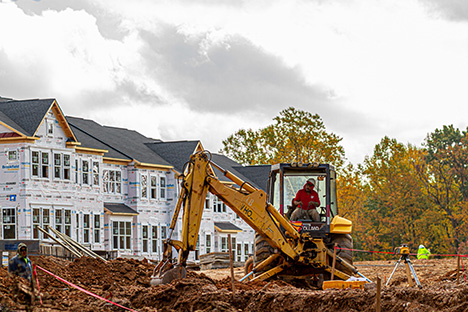Editor’s Note: We’ve gone rouge!
In today’s column, we’re sharing a newly updated version of an article Research Director Kristin Orman wrote for the June issue of our monthly newsletter, The Oxford Income Letter. In the article, Kristin makes the case for investing in homebuilders.
– Rachel Gearhart, Associate Publisher
The Federal Reserve has raised rates 11 times since March 2022. As a result, the average home mortgage interest rate has doubled. The cost of financing the “American Dream” has skyrocketed from just shy of 4.4% in February of last year to nearly 7%.
The 1%/10% rule says that when interest rates go up 1%, your buying power goes down by 10%.
That means buyers can’t afford as much house. I’ll explain…
If you could afford a $500,000 house last year, a 1% rise in interest rates means that you can afford a $450,000 house this year. A 2% rise in interest rates means you can afford only a $400,000 home this year.
That’s a big part of why rising interest rates are bad for homebuilders.
So why in the world did Marc recently recommend a homebuilder stock to his Oxford Income Letter subscribers?
Since the Fed started raising rates on March 16, 2022, the housing industry, as represented by the SPDR S&P Homebuilders ETF (NYSE: XHB), has outperformed the market.

As you can see in the chart, the SPDR S&P Homebuilders ETF is up 21.57% since the day of the first hike while the S&P 500 is up just 7.15%. (Both returns include dividends.) In other words, the SPDR S&P Homebuilders ETF has outperformed the S&P 500 by more than 14 percentage points.
That’s a big beat, especially during a pretty volatile period for the markets.
But if you look closer at the components of the SPDR S&P Homebuilders ETF, you’ll see why I’m even more excited about this recommendation.
You see, the ETF doesn’t include just homebuilders. It’s also made up of building product companies and home improvement retailers.
Owning home improvement retailers hasn’t been as profitable as owning homebuilders since the Fed flipped the switch on the rate-hiking machine.
The Home Depot (NYSE: HD) has handed investors a 1.58% return, and Lowe’s Companies (NYSE: LOW) has returned 4.18%.
So how has the SPDR S&P Homebuilders ETF outperformed with home improvement retailers dragging it down?
The outperformance has been driven primarily by homebuilder stocks.
Since March of last year, the 24 U.S.-listed homebuilders with market caps over $100 million have returned an average of 24.42% (including dividends) during this time period!
Despite inflation, slightly moderating prices and the highest interest rates we’ve seen in 16 years, homebuilder stocks are rising because there’s a housing shortage.
There simply aren’t enough houses in the U.S. to meet demand.
There are still a lot of houses that need to be built, and Marc’s recommendation is going to generate a lot of cash flow doing it. Investors should make themselves at home holding the stock and collecting growing dividends for years to come.
